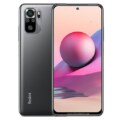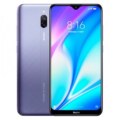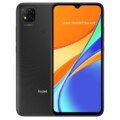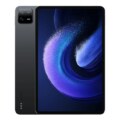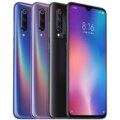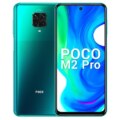- DroidAfrica
- Gadgets
- Xiaomi
- Xiaomi Redmi 9 Activ
Xiaomi Redmi 9 Activ

Xiaomi Redmi 9 Activ Highlights and Overview
The new Redmi 9 Activ is a rebadged Indian model of Redmi 9 launched back in August of 2020. It has an octa-core CPU with dual camera lenses on the rear. From the front, the phone comes in a 6.53-inches HD+ screen, with 720 x 1600 pixels, while retaining a dewdrop notch on the front.
On the inside, the Redmi 9 Activ has an octa-core Helio G35 CPU clocked at 2.3GHz, along with PowerVR GE8320 GPU. The model has either 4/6GB of RAM paired with 64/128GB of internal storage.
As for the optics, you are getting a 13-megapixel main snapper and a 2-megapixel depth lens with an LED flash on the rear, while a single 5-megapixel selfie snapper is kept within the dewdrop notch upfront.
Also on the rear, there is a physical fingerprint scanner and the model is available in three colors of Carbon Black, Coral Green and Metallic Purple. It has a 5000mAh battery while Google Android 10 is available out of the box. The full spec of Xiaomi Redmi 9 Activ is contained in the table below.
Xiaomi Redmi 9 Activ Full Specifications and Features
NETWORK
| Technology | GSM / HSPA / LTE |
| 2G Network Bands | GSM 850 / 900 / 1800 / 1900 - SIM 1 andamp; SIM 2 |
| 3G Network Bands | HSDPA 850 / 900 / 1800 / 1900 / 2100 |
| 4G Network Bands | LTE band 1(2100), 3(1800), 5(850), 8(900), 28(700), 38(2600), 40(2300), 41(2500) |
| Speed | HSPA 42.2/5.76 Mbps, LTE-A (2CA) Cat6 300/50 Mbps |
LAUNCH
| Also Known As |
- - |
BODY
| Dimensions | 164.9 × 77.07 × 9.0 mm |
| Weight | 190 grams |
| Build | Glass front (Gorilla Glass 3) |
| SIM Type | Dual SIM (Nano-SIM, dual stand-by) |
DISPLAY
| Display Type | IPS LCD capacitive touchscreen, 16M colors |
| Size | 6.53 inches, 102.0 cm2 (~82.7% screen-to-body ratio) |
| Resolution | 720 x 1600 pixels, 20:9 ratio (~269 PPI density) |
PLATFORM
| Operating System | Android 10, MIUI 12 |
| Chipset | MediaTek Helio G35 (12 nm) |
| CPU | Octa-core 2.3 GHz Cortex-A53 |
| GPU | PowerVR GE8320 (680 MHz) |
MEMORY
| RAM + ROM | 4/6 GB |
| Card Slot | Yes, up to 512 GB via microSD card (uses dedicated slot) |
MAIN CAMERA
| Camera Type | Double Lenses |
| Camera Sensor(s) |
Main: 13 MP, (wide), 1/3.0", 1.12µm, PDAF Depth: 2 MP |
| Camera Features |
Autofocus Continuous shooting Digital zoom Geotagging Panorama HDR Touch focus Face detection |
| Video Resolution | 1080@30fps, 720p@30fps, |
SELFIE CAMERA
| Camera Type | Single Lens |
| Camera Sensor(s) | 5-megapixel, f/2.2 aperture |
| Camera Features |
FaceID, HDR, 6-level AI face Beauty |
| Video Resolution | 720p@30fps |
SOUND
| Loudspeaker | Yes |
| Speaker Location | Chin, below display |
| Audio Jack Type | Yes, 3.5mm audio jack |
CONNECTIVITY
| Bluetooth | Bluetooth 5.0, A2DP, LE |
| NFC | |
| GPS | Yes, with A-GPS, GLONASS, GALILEO, BDS |
| FM Radio | Yes, FM Radio |
BATTERY
| Battery Capacity | Non-removable Li-Po 5000 mAh battery |
OTHER FEATURES
| Sensors | Fingerprint (side-mounted), accelerometer, proximity, compass |
| Box Contents | Charging Brick / USB cable |
Xiaomi Redmi 9 Activ User Reviews and Opinions
Disclaimer Note
We CANNOT guarantee 100% accuracy for the specification table above.

